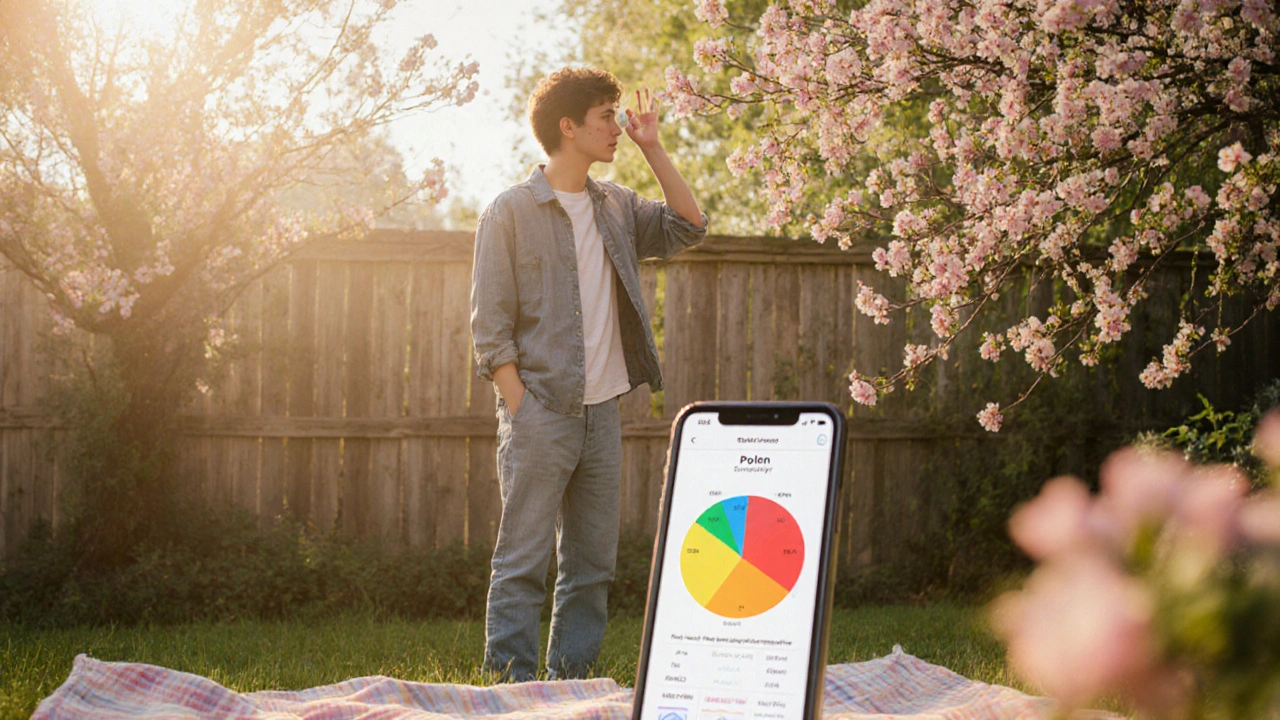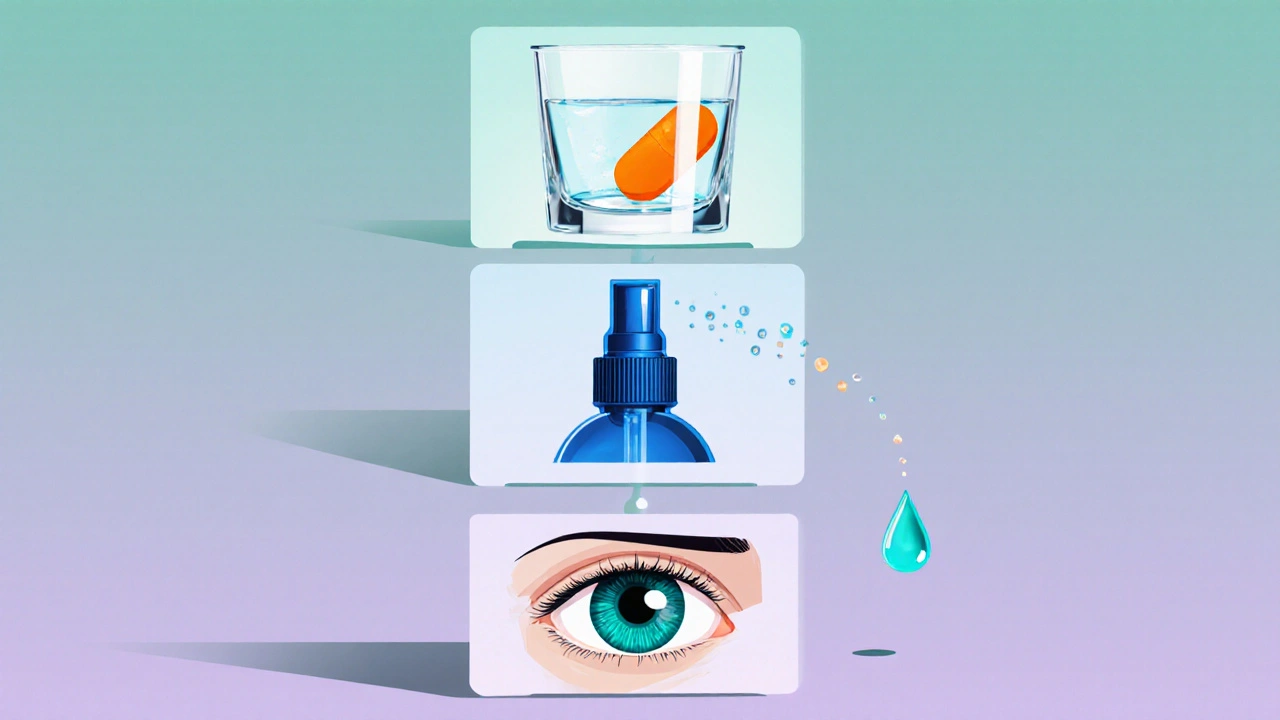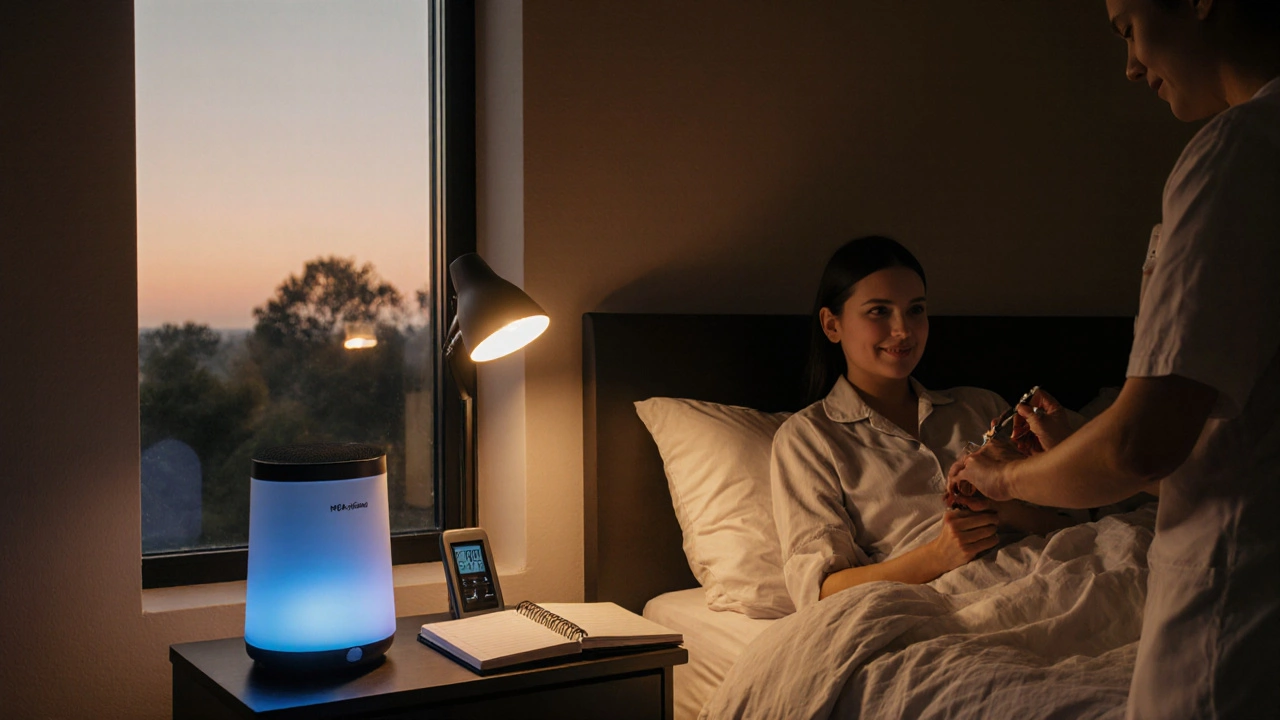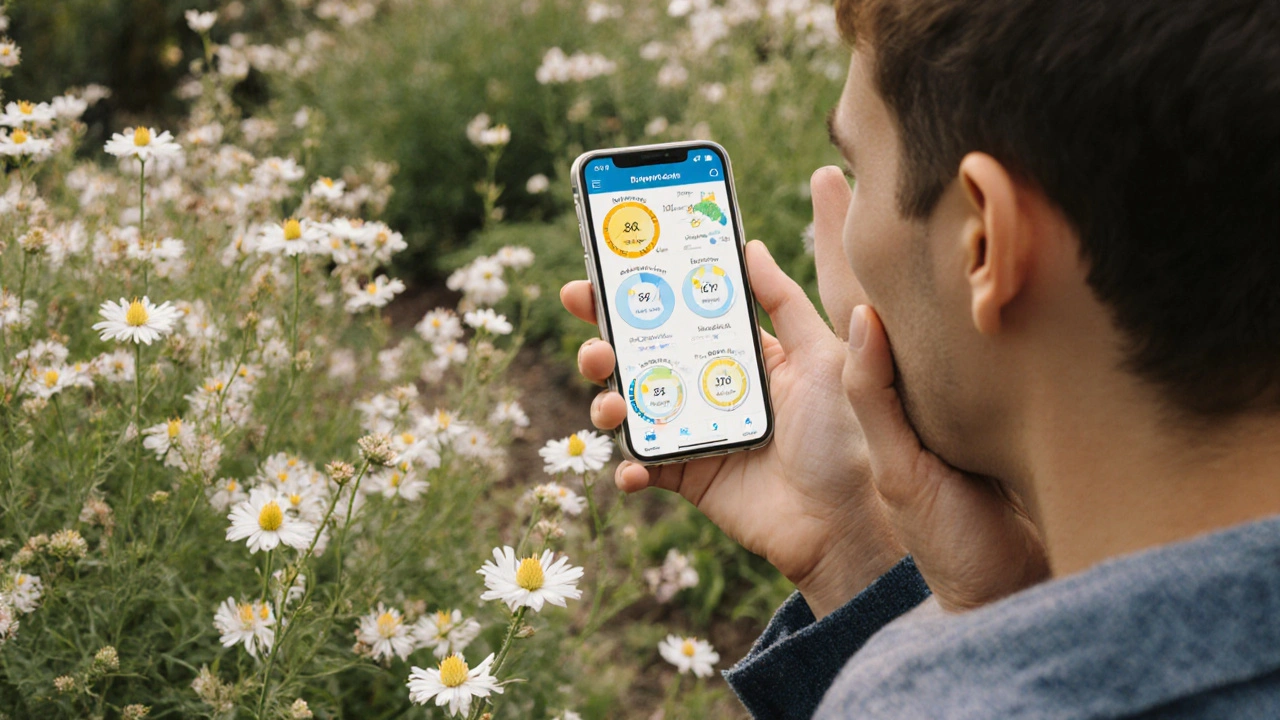 Oct, 12 2025
Oct, 12 2025
Key Takeaways
- Identify your main triggers early and create a personalised avoidance plan.
- Use a layered medication strategy - antihistamines, nasal sprays, eye drops - based on symptom severity.
- Improve indoor air quality with filtration and regular cleaning.
- Consider long‑term options like allergy shots or sublingual immunotherapy.
- Track symptoms daily to fine‑tune your approach.
When the first buds appear, millions start to suffer from itchy eyes, endless sneezing, and a clogged nose. The good news? You don’t have to accept those symptoms as inevitable. With a systematic plan you can keep seasonal allergies under control and enjoy the outdoors again.
seasonal allergies are an immune response to airborne allergens such as pollen, mold spores, or dust mites that causes sneezing, watery eyes, and nasal congestion. In the UK, the Royal College of Physicians estimates that up to 30% of adults experience moderate to severe symptoms each year, especially during spring and early summer.
Understanding Your Triggers
Before you can manage anything, you need to know what you’re dealing with. The most common culprits are:
- pollen - released by trees (birch, oak), grasses, and weeds such as ragweed.
- mold spores - thrive in damp environments and can be abundant after rain.
- dust mite waste - a hidden indoor trigger that flares up when humidity climbs.
Several free apps and local meteorological services publish daily pollen counts. Marking high‑count days on your calendar helps you plan outdoor activities, wear protective glasses, or keep windows closed.
Layered Symptom Control
Think of allergy relief like dressing for the weather - you layer clothing to stay comfortable. The same idea applies to medication.
1. Antihistamines - the first line
Antihistamines are oral drugs that block histamine, the chemical that makes your nose run and eyes itch. Second‑generation options such as cetirizine, loratadine, or fexofenadine start working within 30minutes and typically last 24hours, without the drowsiness associated with older agents.
2. Nasal Sprays - local power
Nasal sprays deliver medication directly to inflamed nasal tissue, offering rapid relief. Steroid sprays (fluticasone, mometasone) need a few days to reach full effect, but they are the most effective long‑term solution for congestion. Saline sprays can be used alongside steroids to thin mucus and keep the passage clear.
3. Eye Drops - protect the windows
Eye drops with antihistamine or mast‑cell stabiliser formulas soothe redness and itching without the sting of over‑the‑counter lubricants. Use them at the first sign of watery eyes; they work within minutes.
4. Decongestants - short‑term rescue
Decongestants such as pseudoephedrine or phenylephrine shrink swollen blood vessels in the nasal lining. Reserve them for acute flare‑ups because the body can develop tolerance after a few days.

Comparing Common Allergy Medications
| Type | Typical Active Ingredient | Onset | Duration | Best For |
|---|---|---|---|---|
| Antihistamine (oral) | Cetirizine | 30min | 24h | General sneezing, itchy eyes |
| Nasal Steroid Spray | Fluticasone | 2‑3days | Continuous | Persistent congestion |
| Eye Drop (antihistamine) | Ketorolac | 5‑10min | 4‑6h | Watery, red eyes |
Improving Indoor Air Quality
Even on a low‑pollen day, indoor air can become a breeding ground for allergens. Simple steps make a big difference:
- Use a HEPA filter in your bedroom and living room. A study by the University of Leeds (2023) showed a 40% reduction in nighttime sneezing when a HEPA unit ran continuously.
- Keep humidity below 50% to deter dust mites and mold. A digital hygrometer helps you monitor levels.
- Wash bedding in hot water (≥60°C) weekly to kill mite allergens.
- Vacuum with a vacuum‑cleaner equipped with a HEPA bag or canister.
These actions also benefit asthma sufferers, making the effort worthwhile for the whole household.

Long‑Term Desensitisation: Immunotherapy
If you’re tired of popping pills every spring, consider immunotherapy, a treatment that slowly retrains the immune system to tolerate allergens. Two common formats exist:
- Allergy shots (subcutaneous immunotherapy) - weekly injections that increase in strength over 3‑6months, then monthly for 3‑5years. Clinical trials show up to a 70% reduction in symptom scores.
- Sublingual tablets or drops (SLIT) - taken at home, typically daily, with similar efficacy for grass‑pollen allergies.
Both require an initial evaluation by an allergist, allergy skin‑prick testing, and a commitment to a multi‑year schedule. The payoff? Many patients can halve or even stop using rescue medications after the treatment course.
Personalised Action Plan
Putting the pieces together works best when you track them. Here’s a simple daily log you can keep on paper or an app:
- Record the local pollen count (low/medium/high).
- Note symptoms (scale 0‑5 for sneezing, itching, congestion).
- Log medications taken (dose and time).
- Mark indoor air‑quality actions performed (filter changed, humidifier off).
- Review weekly - adjust medication levels or add a nasal spray if symptom scores rise.
Over time the log shows patterns, helping you anticipate flare‑ups before they hit.

When to Seek Professional Help
If any of the following occur, book an appointment with an NHS GP or an allergy specialist:
- Symptoms persist despite daily antihistamine and nasal spray use.
- Frequent sinus infections or ear pain.
- Asthma attacks triggered by allergens.
- Impact on work, school, or sleep that feels unmanageable.
Early intervention can prevent chronic sinus issues and reduce the need for prescription steroids.
Bottom Line
Seasonal allergies don’t have to dominate your calendar. By pinpointing triggers, using a layered medication strategy, cleaning indoor air, and exploring immunotherapy if needed, you can reclaim the outdoors and sleep soundly through pollen season.
Frequently Asked Questions
How quickly do antihistamines start working?
Second‑generation oral antihistamines typically begin to relieve sneezing and itchiness within 30minutes, reaching peak effect after about an hour.
Can I use a nasal spray and an antihistamine together?
Yes. Combining a daily steroid nasal spray with an oral antihistamine is a common and safe approach that tackles both congestion and sneezing.
Is a HEPA filter worth the cost?
For most households, a good HEPA filter reduces indoor pollen exposure by 30‑40% and can cut nighttime symptom severity in half, making it a cost‑effective investment.
What is the difference between allergy shots and sublingual tablets?
Allergy shots are administered by a healthcare professional and involve a gradual increase in allergen dose. Sublingual tablets are taken at home daily, dissolve under the tongue, and are easier for people who dislike needles.
Should I stop medication during winter?
If pollen counts are consistently low and you’re symptom‑free, you can taper antihistamines under doctor guidance. Keep a nasal steroid spray if you suffer from chronic congestion.
Kaitlyn Duran
October 12, 2025 AT 13:18Totally agree, the HEPA filter alone made a big difference for me.
Terri DeLuca-MacMahon
October 14, 2025 AT 06:58Wow, this guide is a game‑changer!!! 🌟 I’ve been drowning in sneezes every spring, and after swapping to a steroid nasal spray plus a nightly HEPA filter, the relief is real!!! Keep the layered approach, it’s like dressing for the weather but for your nose!!! 💪 Don’t forget to track your symptoms – the little log can save you a lot of frustration later!!! And if you’re brave enough, give immunotherapy a shot – it paid off for me big time!!!
gary kennemer
October 16, 2025 AT 00:38Adding a humidifier set to under 50 % humidity can really curb dust‑mite growth, especially in the bedroom. Pair that with a weekly wash of bedding in hot water, and you’ll see a noticeable dip in night‑time congestion. Also, rotating your nasal spray nozzle every few weeks helps maintain consistent dosing. If you can, schedule a quick check‑in with your pharmacist to make sure the antihistamine you’re using matches the specific pollen type in your area. Small tweaks like these often make the layered strategy work even better.
Payton Haynes
October 17, 2025 AT 18:18All these meds are really just a way for Big Pharma to keep us buying forever. The same companies that profit from vaccines also push allergy shots without telling us the long‑term risks. Keep an eye on the ingredients and demand transparency.
Earlene Kalman
October 19, 2025 AT 11:58Honestly, most of this article just repeats the same old advice you find on any pharmacy website. If you’re looking for something new, try looking beyond the mainstream and consider natural antihistamines like quercetin.
Brian Skehan
October 21, 2025 AT 05:38True, the pharma angle is shady, but the real hidden agenda is how they bundle allergy shots with other pricey treatments to lock you in. They want you dependent, not cured.
Andrew J. Zak
October 22, 2025 AT 23:18It’s great to hear a quick win with a HEPA filter; many people overlook indoor air quality as a first step. Simple changes can have a big impact, especially in older homes with poor ventilation.
Monika Kosa
October 24, 2025 AT 16:58Even the pollen count apps might be skewed – they could be underreporting to encourage more sales of over‑the‑counter meds. Always double‑check with multiple sources before planning your day.
Gail Hooks
October 26, 2025 AT 10:38🤔 Your enthusiasm is contagious! 🌱 From a broader perspective, managing allergies is also about respecting the ecosystem – using fewer chemicals and more natural barriers helps both us and the environment. Keep sharing the positive vibes! 🌼
Derek Dodge
October 28, 2025 AT 04:18I kinda just go with the flow – if my eyes itch i use the drops, if my nose gets stuffy i get the spray. Nothing fancy, just what works day by day.
EDDY RODRIGUEZ
October 29, 2025 AT 21:58Terri, you’ve captured the spirit of fighting allergies head‑on! 🎉 I’ve been there, waking up with a raspy throat and a mountain of tissues. What saved me was sticking to a strict bedtime routine: a saline rinse, a couple of drops, then a gentle steroid spray. I also set a reminder on my phone to swap the HEPA filter every three months – the air feels noticeably fresher. Remember, consistency beats occasional heroics every single time. Keep the fire alive, and the sneezes will bow down! 🚀
Christopher Pichler
October 31, 2025 AT 15:38While the article covers the standard pharmacologic ladder, it neglects the emerging role of biologics like omalizumab in refractory cases. For patients with comorbid asthma, targeting IgE can streamline both airway and nasal symptomatology. It would be prudent to at least mention this modality in a comprehensive guide.
VARUN ELATTUVALAPPIL
November 2, 2025 AT 09:18Interesting point!!! But have you considered that the data on biologics is still in flux??? Some studies even suggest off‑target effects!!! Keep digging!!!
Henry Clay
November 4, 2025 AT 02:58People need to stop treating allergies like a minor inconvenience they can just ignore :) It's a real medical issue that deserves proper attention.
Isha Khullar
November 5, 2025 AT 20:38The true battle is within – we must confront the invisible pollen that seeks to dominate our spirit and reclaim our autonomy
Catherine Zeigler
November 7, 2025 AT 14:18Spring arrives with blossoms and a chorus of sneezes, but that doesn’t mean we have to surrender our love for the great outdoors. The key is to start each day with a brief, mindful check of the pollen forecast, then wear a simple pair of sunglasses to reduce eye exposure. Follow that with a quick rinse of saline in the nostrils – it clears out any lingering irritants before they trigger a cascade. Next, take a non‑drowsy antihistamine such as cetirizine, which will keep the histamine surge at bay without dragging you into a foggy afternoon. If congestion still nags, a few sprays of fluticasone will calm the inflamed tissue and open up your airways. Don’t forget to keep your living space tidy: vacuum with a HEPA‑rated cleaner, wash your bedding in hot water weekly, and run a high‑efficiency filter in your bedroom. Maintaining humidity below 50 % will make your home hostile to dust mites and mold, two sneaky indoor culprits. For those who want a long‑term solution, discuss immunotherapy with an allergist – the gradual exposure can re‑train your immune system over months or years. Keep a simple symptom journal, rating sneezes, itchiness, and congestion on a 0‑5 scale; patterns will emerge and guide you on when to up‑dose or step back. Celebrate the small victories, like a night without a single tissue, and remember that consistency is more powerful than occasional over‑the‑counter heroics. Share your successes with friends; a community of proactive allergy‑warriors can swap tips and stay motivated. And if a day does get rough, be kind to yourself – a warm cup of tea and extra rest can reset your system. In the grand scheme, these habits not only tame pollen‑induced misery but also improve overall respiratory health. So gear up, stay informed, and let the season’s beauty inspire you rather than irritate you. With perseverance and the right toolbox, you’ll find yourself breathing easier and enjoying the blossoms you once dreaded.
henry leathem
November 9, 2025 AT 07:58While the advice is well‑meaning, it’s a superficial checklist that ignores the pathophysiology of IgE‑mediated hypersensitivity. A true protocol would integrate biomarker monitoring and precision dosing rather than generic dosing schedules.